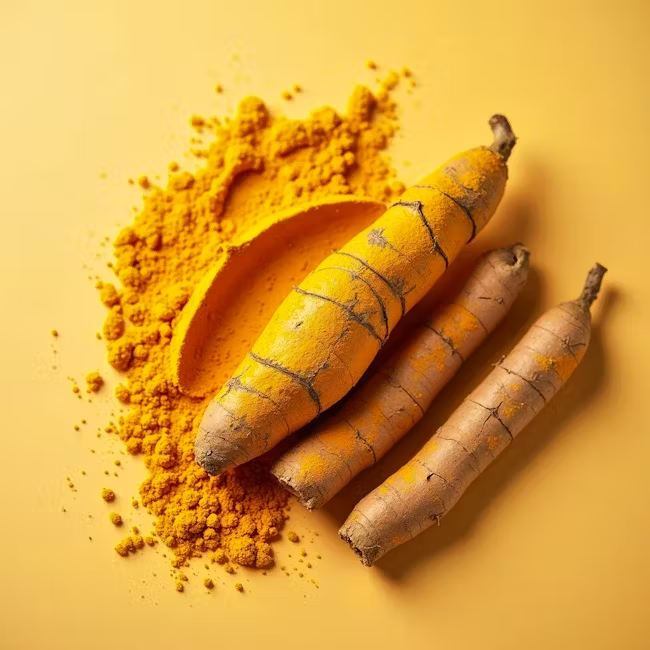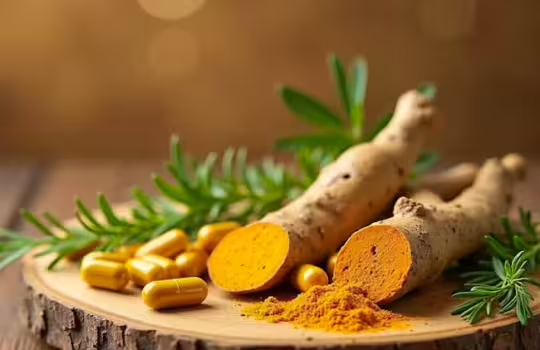For thousands of years, a simple yellow spice has been a cornerstone of traditional medicine in many cultures. Used to flavor food, dye fabrics, and even as a form of currency, this ancient root has been revered for its medicinal properties. But what makes it so special, and how can it be used to reduce inflammation and improve overall health? From its ancient roots to its modern applications, we’ll explore the science behind this incredible spice and uncover the secrets to unlocking its full potential.
1. What Is Turmeric: Uncovering Its Ancient Roots and History
Turmeric, also known as Curcuma longa, is a spice that has been used for thousands of years in traditional medicine and culinary practices. Native to the Indian subcontinent and Southeast Asia, turmeric has been a staple in many cultures for its medicinal, spiritual, and culinary properties. The history of turmeric dates back to the ancient Vedic period in India, around 4000-5000 years ago, where it was mentioned in various Ayurvedic texts as a treatment for various health conditions.
Turmeric’s ancient roots can be seen in the Sanskrit name “Haridra,” which means “that which is yellow” or “that which is golden.” This refers to the spice’s vibrant yellow color, which is due to the presence of a polyphenol compound called curcumin. In ancient India, turmeric was considered a sacred spice and was used in various rituals and ceremonies. It was also used as a medicinal herb to treat a range of health conditions, including indigestion, fever, and inflammation.
Turmeric was also introduced to the Middle East and Europe through the spice trade, where it became a popular ingredient in various cuisines. In the 18th century, turmeric was used as a dye for fabrics and other materials, and its anti-inflammatory properties were also recognized. Today, turmeric is still widely used in traditional medicine and is also being studied for its potential health benefits in modern medicine. With its rich history and cultural significance, turmeric remains an important spice in many parts of the world.
Turmeric is also a key ingredient in Ayurvedic medicine, which is an ancient system of traditional medicine that originated in India. In Ayurvedic medicine, turmeric is used to balance the three doshas (or energies) in the body: Vata, Pitta, and Kapha. Turmeric is also used to treat various health conditions, including arthritis, digestive problems, and skin conditions.
2. The Active Compound Curcumin: Understanding Its Role in Turmeric’s Anti-Inflammatory Properties
Turmeric, the yellow spice commonly found in Indian and Middle Eastern cooking, owes its potent anti-inflammatory properties to a single compound: curcumin. This polyphenolic compound is responsible for the majority of turmeric’s health benefits, and its unique structure allows it to interact with various biological pathways in the body.
Curcumin is a lipophilic compound, meaning it is soluble in fats and oils. This property allows it to easily cross cell membranes and interact with cellular components. Additionally, curcumin has a high degree of bioavailability, meaning it can be easily absorbed and utilized by the body.
Research has shown that curcumin is able to inhibit the production of pro-inflammatory enzymes, such as COX-2, which is involved in the production of pain-causing prostaglandins. Curcumin also blocks the activation of NF-KB, a protein complex that plays a key role in the regulation of inflammation. By inhibiting these pathways, curcumin is able to reduce inflammation and promote healing in the body.
The anti-inflammatory effects of curcumin have been studied extensively in various animal models, including those of arthritis, gout, and other inflammatory diseases. These studies have consistently shown that curcumin is able to reduce inflammation and improve symptoms. While more research is needed to fully understand the effects of curcumin in humans, the available evidence suggests that it may be a valuable adjunct to conventional treatments for inflammatory diseases.
Overall, curcumin is a powerful compound with a range of anti-inflammatory effects. Its unique structure and high bioavailability make it an ideal candidate for therapeutic applications, and its potential benefits for human health are only beginning to be explored.
3. The Science Behind Turmeric’s Anti-Inflammatory Properties: How Curcumin Works in the Body
The science behind turmeric’s anti-inflammatory properties lies in its active compound, curcumin. This powerful polyphenol has been extensively studied for its potent anti-inflammatory and antioxidant effects. When curcumin is ingested, it is absorbed into the bloodstream, where it then targets various pathways involved in inflammation.
One of the primary ways curcumin works is by inhibiting the production of pro-inflammatory enzymes, such as COX-2 and 5-LOX. These enzymes are responsible for producing prostaglandins and leukotrienes, which are key players in the inflammatory response. By blocking the activity of these enzymes, curcumin effectively reduces the production of these pro-inflammatory molecules, leading to a decrease in inflammation.
Curcumin also interferes with the signaling pathways that trigger inflammation. For example, it inhibits the activation of NF-kB, a transcription factor that regulates the expression of pro-inflammatory genes. By blocking NF-kB, curcumin prevents the transcription of genes that code for pro-inflammatory proteins, thereby reducing inflammation.
Furthermore, curcumin has been shown to modulate the activity of immune cells, such as macrophages and T-cells, which play a crucial role in the inflammatory response. By regulating the activity of these cells, curcumin helps to prevent excessive inflammation and promotes a more balanced immune response.
Overall, the anti-inflammatory effects of curcumin are multifaceted and involve several mechanisms. By understanding how curcumin works in the body, we can better appreciate the potential benefits of turmeric for inflammation and overall health.
4. The Mechanisms Behind Turmeric’s Anti-Inflammatory Action: NF-KB, COX-2, and Other Key Players
Turmeric’s anti-inflammatory properties can be attributed to its ability to interact with various molecular pathways in the body. Two key players in this process are NF-KB and COX-2. NF-KB (Nuclear Factor kappa B) is a protein complex that regulates the transcription of genes involved in inflammation and immune responses. When NF-KB is activated, it triggers the production of pro-inflammatory enzymes and cytokines, leading to inflammation. Curcumin, the active compound in turmeric, has been shown to inhibit NF-KB activation, thereby reducing inflammation and oxidative stress.
Another important player in turmeric’s anti-inflammatory action is COX-2 (Cyclooxygenase-2), an enzyme responsible for converting arachidonic acid into prostaglandins, which are potent pro-inflammatory mediators. Curcumin has been shown to inhibit COX-2 expression and activity, reducing the production of prostaglandins and subsequent inflammation. Additionally, curcumin’s ability to scavenge free radicals and reduce oxidative stress further contributes to its anti-inflammatory effects.
Other key players involved in turmeric’s anti-inflammatory action include MAPK (Mitogen-Activated Protein Kinase) and JNK (c-Jun N-terminal kinase), which are signaling pathways that regulate inflammation and cell growth. Curcumin’s ability to modulate these pathways further contributes to its anti-inflammatory and antioxidant effects. By understanding the mechanisms behind turmeric’s anti-inflammatory action, we can appreciate the potential benefits of incorporating turmeric into our diet and lifestyle to promote overall health and well-being.
5. The Benefits of Turmeric for Inflammation and Overall Health: From Joint Pain to Neuroprotection
Turmeric, with its powerful anti-inflammatory properties, has been widely recognized for its numerous health benefits. Reducing joint pain and inflammation is one of the most significant advantages of consuming turmeric. The active compound curcumin has been shown to inhibit the production of inflammatory enzymes, providing relief from joint pain and inflammation in people with arthritis.
In addition to its anti-inflammatory effects, turmeric has also been found to possess antioxidant and anti-cancer properties. The curcumin in turmeric has been shown to neutralize free radicals, which can damage cells and contribute to the development of chronic diseases such as cancer. Furthermore, turmeric has been found to have neuroprotective effects, which can help prevent or slow down the progression of neurodegenerative diseases such as Alzheimer’s and Parkinson’s.
Turmeric has also been found to have cardiovascular benefits, including lowering cholesterol levels and preventing the formation of blood clots. The anti-inflammatory properties of turmeric can also help reduce the risk of chronic diseases such as diabetes and obesity. Moreover, turmeric has been found to have digestive benefits, including reducing symptoms of bloating, gas, and indigestion.
Overall, the benefits of turmeric for inflammation and overall health are numerous and well-documented. Incorporating turmeric into your diet can have a significant impact on your overall health and well-being. Whether you consume it as a spice, supplement, or topical application, turmeric is a natural and effective way to reduce inflammation and promote overall health.
6. Using Turmeric for Inflammation: Supplements, Topical Applications, and Food-Based Strategies
When it comes to harnessing the anti-inflammatory power of turmeric, there are several ways to incorporate it into your daily routine. One of the most convenient options is to take turmeric supplements, which can be found in various forms, including capsules, tablets, and powders. Look for products that contain a minimum of 500mg of curcuminoids per serving and are free from additives and fillers.
Another effective way to use turmeric for inflammation is through topical applications. Turmeric creams and ointments can be applied directly to the skin to target specific areas of pain and inflammation, such as joints or muscles. These topical applications can be especially beneficial for people with conditions like arthritis or fibromyalgia.
In addition to supplements and topical applications, food-based strategies can also be an effective way to use turmeric for inflammation. Turmeric can be added to a variety of dishes, from soups and stews to curries and stir-fries. Golden milk, a traditional Indian drink made with turmeric, milk, and spices, is also a delicious and comforting way to incorporate turmeric into your diet.
Some key tips to keep in mind when using turmeric for inflammation include:
– Start with small amounts and gradually increase your dosage as needed
– Combine turmeric with other anti-inflammatory compounds, such as ginger and omega-3 fatty acids
– Consult with a healthcare professional before taking turmeric supplements, especially if you have any underlying health conditions or are taking medications
By incorporating turmeric into your daily routine through supplements, topical applications, and food-based strategies, you can harness its powerful anti-inflammatory properties and start experiencing the benefits for yourself.
7. Maximizing Turmeric’s Anti-Inflammatory Effects: Tips for Enhanced Absorption and Bioavailability
While turmeric offers numerous health benefits, its bioavailability can be limited, making it essential to find ways to enhance its absorption in the body. Fortunately, there are several strategies that can help maximize turmeric’s anti-inflammatory effects.
Combining with Black Pepper: One of the most effective ways to boost turmeric’s absorption is by consuming it with black pepper. The active compound piperine in black pepper has been shown to increase curcumin bioavailability by up to 2,000%. This is because piperine inhibits the enzymes that break down curcumin, allowing it to be absorbed more efficiently.
Adding Healthy Fats: Turmeric is fat-soluble, meaning it requires healthy fats to be absorbed effectively. Adding sources of healthy fats, such as coconut oil, olive oil, or avocado, to your turmeric-containing meals can help enhance its absorption.
Using Bioavailability-Enhanced Supplements: Some turmeric supplements contain bioavailability-enhanced formulas that combine curcumin with other compounds, such as piperine or lipids, to enhance absorption. When choosing a supplement, look for products that specifically mention enhanced bioavailability.
Additionally, consuming turmeric in food-based forms, such as curries or golden milk, can help increase its bioavailability. The combination of spices and healthy fats in these traditional preparations can enhance curcumin absorption, making it easier to reap the benefits of this powerful anti-inflammatory compound.





